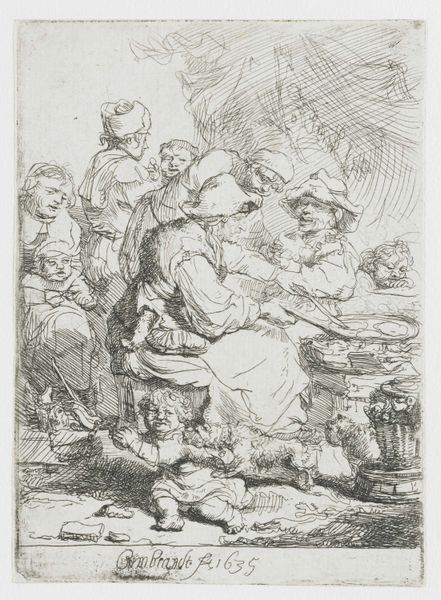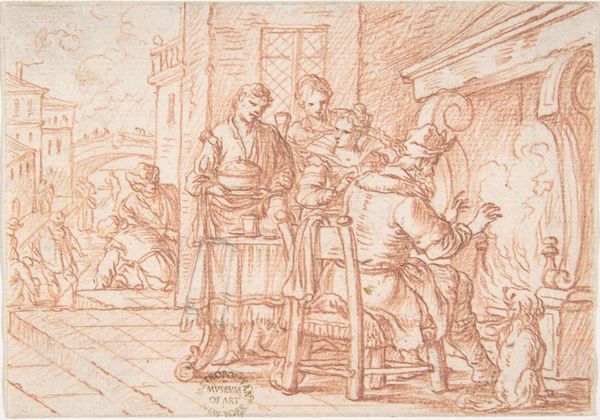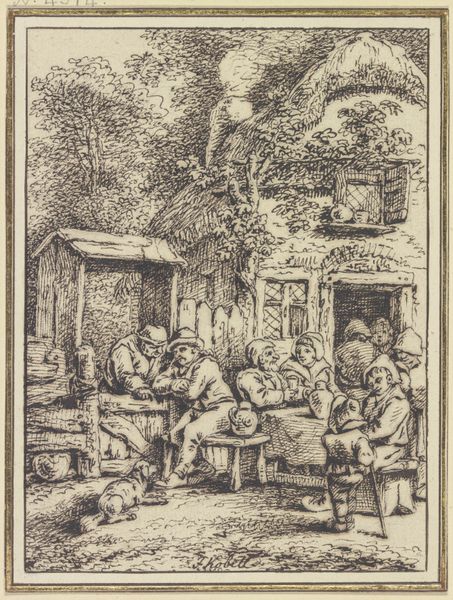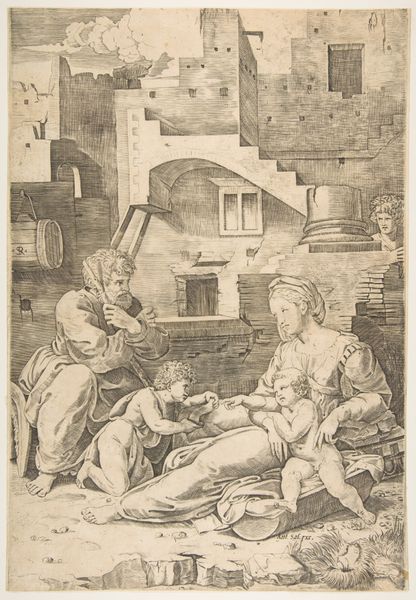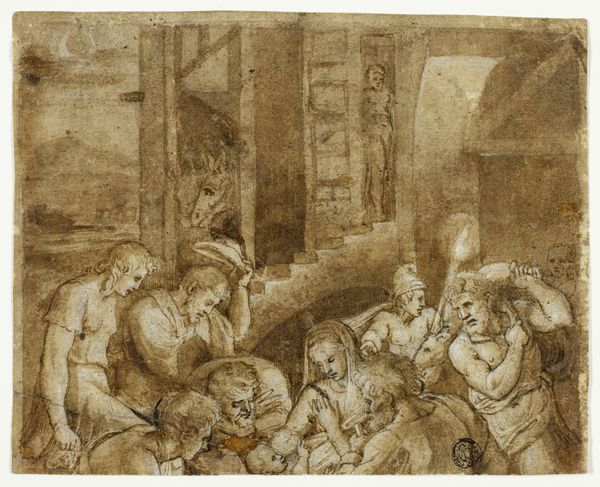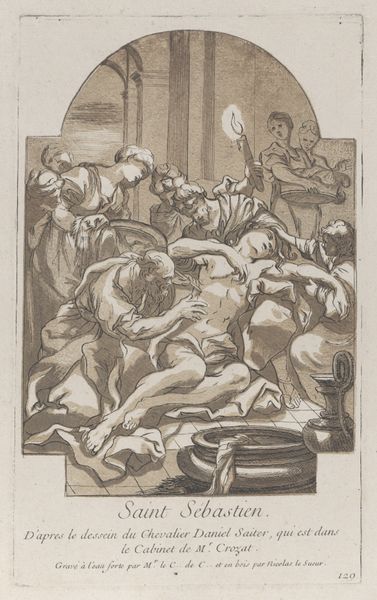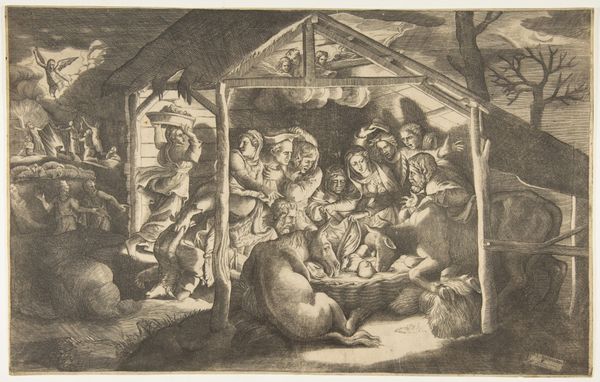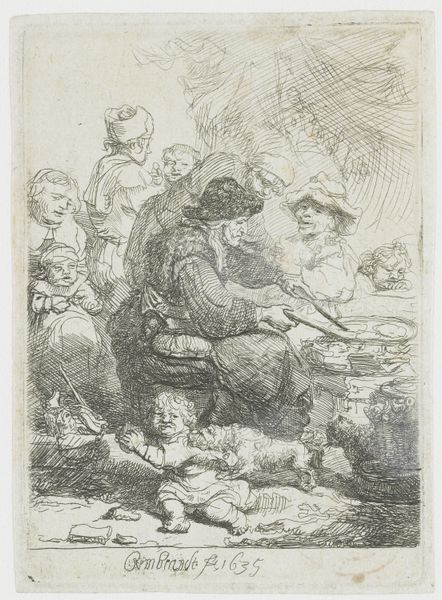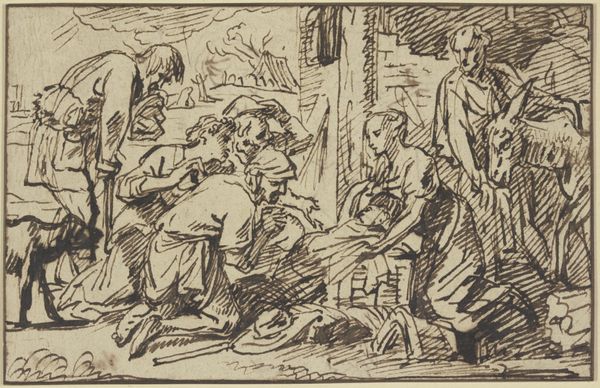
drawing, paper
#
drawing
#
narrative-art
#
baroque
#
pen sketch
#
figuration
#
paper
#
genre-painting
#
history-painting
Copyright: Public Domain
Curator: Charles Parrocel's "Zechende Soldaten vor einem Wirtshaus"—loosely translated, "Soldiers Carousing Before a Tavern"—drawn sometime between 1728 and 1732, certainly captures a mood. What springs to mind for you when you first look at it? Editor: Organized chaos! Or maybe organized sloppiness? I see a drunken pileup rendered in warm reddish-brown tones. The sketchiness adds to the feeling of a fleeting, almost voyeuristic, moment. Curator: I agree. It’s almost like we've stumbled upon this rowdy scene outside the tavern. Parrocel has rendered the energy of the soldiers with a clear economy of line. Note the cross-hatching to indicate shadow and form. What does that material economy speak to you about in terms of process, do you think? Editor: For me, the clear material constraint—this isn't an oil painting with layers and glazes—highlights labor. Red chalk drawings, while lovely, were also workaday. Think of all those preparatory sketches dashed off, the pressure to be precise, to capture the light in an era before photography. It reminds me that art, even "high art" like history painting, is made of materials and the labor that shapes them. Curator: I see that completely! Parrocel has captured a slice of 18th-century military life in a way that feels surprisingly relatable. These aren't idealized heroes but ordinary men unwinding, or maybe over-winding. There's a drum, weaponry laying around, but its function and utility are forgotten while in front of the tavern. Editor: And those slumped postures, that overflowing tankard...the way labor gives way to leisure, or rather, consumption. It's easy to imagine these men having earned or plundered a few coins and promptly spending them on drink and momentary pleasure. Curator: It really gives a fresh lens onto traditional history and genre painting, doesn't it? Editor: Exactly. It reminds us that those grand narratives are ultimately built from these smaller, messier human experiences, these material exchanges. Curator: Beautifully put. Thank you! I feel I have new eyes and respect for the role that the common, earthly element plays in what otherwise would be an artistic illusion! Editor: Anytime! It is vital to connect art and culture and their deep entwinement to everyday life. It helps dismantle artificial divides between “high” and “low” that have always shaped the art world.
Comments
No comments
Be the first to comment and join the conversation on the ultimate creative platform.
